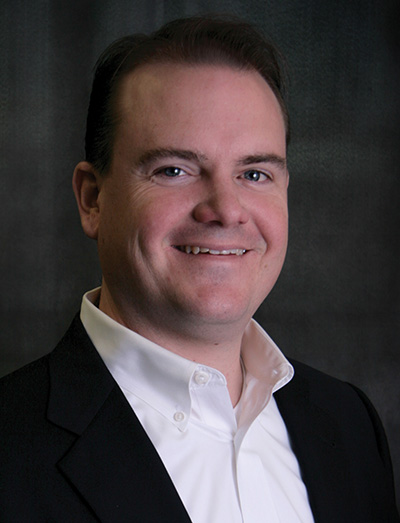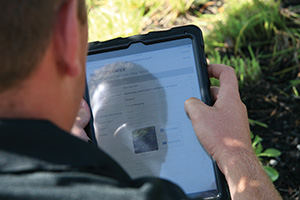How Divisions Maintenance Group utilizes game-changing technology as well as ‘boots on the ground’ to become a truly integrated partner to its retail and restaurant clients.
By Lynn Peisner
They say a chain is only as strong as its weakest link. At Divisions Maintenance Group, this is a saying that’s taken to heart.
The Newport, Kentucky-based facilities maintenance company serves a long roster of clients, from health care to transportation, shopping centers to restaurants. And while the company, at the beginning, offered a limited range of services like landscaping and parking lot care, CEO and Founder Gary Mitchell says these days the company can provide almost any off-menu facilities service a client might desire.
 “Our retail clients really shaped how we operate today,” Mitchell explains. “They experience a lot of change, and we had to figure out how to pivot whenever they did. A facilities issue that causes down time in a store translates directly into lost revenue, so we had to learn how to match or exceed their sense of urgency. Typically, retailers have needs that must be met on both the store level and at the corporate level, so we had to learn how to provide them with visibility and auditability. It adds so much value to all our relationships — we had to become an integrated partner.”
“Our retail clients really shaped how we operate today,” Mitchell explains. “They experience a lot of change, and we had to figure out how to pivot whenever they did. A facilities issue that causes down time in a store translates directly into lost revenue, so we had to learn how to match or exceed their sense of urgency. Typically, retailers have needs that must be met on both the store level and at the corporate level, so we had to learn how to provide them with visibility and auditability. It adds so much value to all our relationships — we had to become an integrated partner.”
There is a catch, though. Says Mitchell: “If we can’t verify ourselves, with our own eyes, that the work is done and that it is done to high-quality standards, we won’t do it.”
The foundation of Divisions’ model is its team of field representatives, who are stationed in metro areas around the country and charged with managing the quality of services being provided at customers’ sites.
“We onboard approximately 350 new service providers each quarter, and we vet them all thoroughly, but we also want to get down on the ground and see their operations,” Mitchell says. “Walk through their site, shake their hand and start a relationship with them. You can’t just send a scope of work to a landscaper and assume everyone knows what’s going on and what needs to be done. That’s not how it works.”
According to Mitchell, having someone physically present in the service providers’ own community goes a long way toward making sure everyone is on the same page.
Client properties are audited through regular on-site inspections. Divisions has developed a digital platform to catalog performance, measuring defects or tasks undone as well as work completed successfully. Over time, this creates an internal quality score for service providers and allows quantitative data to drive communications and performance evaluations for improvement in the field.
“These tools we’ve developed and the way we’re leveraging the way people use technology — it’s a game changer in FM,” Mitchell says.
 Divisions’ digital platform bears similarities to some of the traditional work order management systems common in facilities maintenance, but performs beyond a simple database. Each participant in the process of completing a service (the customer, the service provider and Divisions) has an interface designed specifically to meet the needs of the user. For the field representative, that looks like a customized inspection app for tablets that guides their quality checks and facilitates communication with service providers. For service providers, it’s both a mobile app that delivers job-specific information for each work order with GPS check-in capabilities as well as an online portal that facilitates rapid and correct invoice completion. And for customers, both mobile and online interfaces provide job status information, invoice processing and property auditing capabilities. The idea is to make the experience seamless and integrated all the way around, removing barriers from the speed of service.
Divisions’ digital platform bears similarities to some of the traditional work order management systems common in facilities maintenance, but performs beyond a simple database. Each participant in the process of completing a service (the customer, the service provider and Divisions) has an interface designed specifically to meet the needs of the user. For the field representative, that looks like a customized inspection app for tablets that guides their quality checks and facilitates communication with service providers. For service providers, it’s both a mobile app that delivers job-specific information for each work order with GPS check-in capabilities as well as an online portal that facilitates rapid and correct invoice completion. And for customers, both mobile and online interfaces provide job status information, invoice processing and property auditing capabilities. The idea is to make the experience seamless and integrated all the way around, removing barriers from the speed of service.
Divisions is also focused on delivering standardized service, in terms of a client receiving exactly the same output — down to the same color of mulch or number of trees beside each entrance — whether the location is Kansas City or San Francisco. Divisions also aims to standardize costs. For example, if a wheel stop could cost $125 in Kentucky but $600 in Phoenix, then something’s not right. “Each service call provides us with many valuable data points — and also helps us call out the anomalies when they happen,” Mitchell explains. “This is essential to how Divisions creates value for customers.”
For example, through many winters of pushing snow for customers, Divisions tracked the cost of service per inch of snow per square foot of removal area. What emerged was a data pattern that fell along a bell curve, pointing the team to the service providers and properties that fell at both the exceptionally high and low ends of the spectrum. “This information turns our eyes to the properties where we are seeing lack of efficiency that need to be examined and brought into line first,” Mitchell says. “This alone has been able to save a single customer 10% in a single snow season.”
Where his team is concerned, Mitchell says he prizes passion, innovation and even a few flubs every now and then.
“I realize that people need to make their own mistakes to become the leaders we depend on them to be,” he says, adding that a picture on the wall of his office depicts two characters: one with a cartoon bubble saying, “Move fast and break things,” and another who replies: “I’ll bring the beer.”
“That’s the process of innovation, and I respect that,” he adds.
 Moving into the future, innovation will be essential as the facilities maintenance industry explores how technology will improve efficiency and accuracy in the field. Artificial intelligence and virtual and augmented reality are expected to aid in almost surreal futuristic ways.
Moving into the future, innovation will be essential as the facilities maintenance industry explores how technology will improve efficiency and accuracy in the field. Artificial intelligence and virtual and augmented reality are expected to aid in almost surreal futuristic ways.
Mitchell looks to a time when a technician could don augmented reality goggles while interacting with a water heater, for example, that would show where repairs are needed, communicate directly with the manufacturer for a repair tutorial, and indicate exactly which part is needed.
“We want to be the creative link between our provider base, our techs on the ground and the manufacturers of the parts and other things we’re using onsite,” he says.
Within the next few years, Mitchell plans to be using artificial intelligence to automatically identify and communicate problems — such as weeds or potholes — at job sites through optical data gathering resources, including video.
“As an industry, we have to figure out how we’re going to apply these technologies to improve our services,” he says. “It’s endless. I’m probably not even thinking of a tenth of the possibilities of what new technologies can do for us. Some of them will work, some of them won’t. You just have to try out some options and see what happens. The one thing you can’t ever do is stand still.”
“You hear all the time that brick-and-mortar retailers are feeling the effects of the cultural shift to online shopping, and you might think that would have a negative impact on the companies like ours that service them,” Mitchell continues. “Just the opposite is true for us. The retailers who thrive have to operate smarter and leaner, and that is always a situation where we can provide value. Our entire system is structured so that we can help them do just that with FM.
For more information, visit www.divisionsinc.com.
— Lynn Peisner is a staff writer at France Media, Inc.
